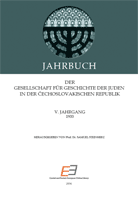
The Prague and the Bohemia regional Rabbinate at the End of the 17th and the Beginning of the 18th Centuries
Das Prager und Böhmische Landesrabbinat Ende des siebzehnten und Anfang des achtzehnten Jahrhunderts
xxx
More...
xxx
More...
Keywords: Matija Divković, Printing topography; Venice printing;
Bosanski franjevac fra Matija Divković (1563.-1631.) tiskao je svoja djela u Veneciji (Mlecima) i to, kako se tvrdi u naslovu Nauka karstianskoga iz 1611. “za narod slovinski”. Veneciju stoga prepoznajemo kao produkcijski kontekst njegovih djela u tiskarskom smislu, dok se recepcija tih djela događa uglavnom na istočnoj obali Jadrana i pripadajućem kontinentu, kako među ondašnjim običnim vjernicima u tom prostoru kao krajnjim recipijentima njegovih tekstova, tako i među današnjim proučavateljima i čitateljima. Recepcijski vid i kontekst Divkovićeva rada dosad je zadobio bitno više pozornosti proučavatelja raznih profi la od tiskarskog do produkcijskog. Ovaj rad stoga želi biti prinos istraživanju produkcijskoga konteksta Divkovićevih djela i to u bibliografskom smislu. Venecija je u Divkovićevo doba bila međunarodno tiskarsko središte. Stoga se najprije promatra stanje u venecijanskom tiskarstvu, a potom se u vidu uzorka izlučuju bibliografski podaci o hrvatskim knjigama tiskanim u Veneciji te promatraju kao izabrani bibliografski nacionalni kontekst Divkovićevih tiskanih knjiga u razdoblju 1596.-1653. Primjenjuju se kriteriji za odabir građe hrvatske retrospektivne bibliografije: autor, jezik teritorij. Izabrana zbirka knjiga popisuje se i analizira s gledišta prinosa pojedinih venecijanskih tiskara njezinu nastanku, potom s obzirom na njihov sadržaj i naposljetku imajući u vidu prinos pojedinih autora. Pri tom se nastoji odrediti i vrednovati Divkovićevo mjesto u tom kontekstu.
More...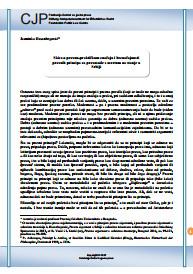
Keywords: Public law; legal principles; legal rules; status; practices; Republic of Serbia; history of law;
Osnovna teza ovog spisa jeste da pravni principi i pravna pravila (koji se inače ne mogu odsečno razgraničiti) mogu ali ne moraju da imaju značaja u praksi, pri sudskom odlučivanju, i to i u onoj praksi koja se ocenjuje kao dobra ili čak uzorna, dakle, u uzornim pravnim porecima. To važi za sve predmoderne pravne poretke. Modernost – pa i pravna modernost – postavlja određene „zahteve“ pred svaki pravni poredak koji po sopstvenom samorazumevanju hoće da bude (viđen kao) moderan. Moderni pravni poreci ne mogu bez pravnih principa, ali ni u njima pridavanje značaja pravnim principima nije nikakva garantija za dobru (odnosno uzornu) sudsku praksu. Dobra (odnosno uzorna) sudska praksa – i u predmodernim i u modernim pravnim porecima – postoji u dobrim (odnosno uzornim) pravosudnim komunikacijskim zajednicama. Da bi se ta teza dokazala, odrediće se neophodan pojmovno-teorijski referentni okvir i razmotriti argumenti relevantni za (hipo)tezu postavljenu na početku.
More...
Keywords: melancholy; humoral theory; Aristotel̉̉’s Problema XXX; Petrarch; R. Burton; J. A. Komenský
The religious type of melancholy reflects the crisis of human consciousness as regards the sacral. Its first but singular instances can be found in Homer’s Iliad. Dominant throughout Antiquity was the humoral treatment of melancholy as a disease from which both the body and soul suffered. In his treatise Problema XXX Aristotle uses a new semantic emphasis, associating melancholy with genius. The Renaissance vindication of the antique philosophy of Plato and Aristotle was a prerequisite for a debate with the Christian axiology of dolourism and martyrism, which, as early as the XIV century, involved the problem of creative inspiration. In the course of historical evolution, melancholy turned from a diagnosis into an ethos. This process is illustrated in the article through the works of Petrarch, R. Burton и J. A. Komenský.
More...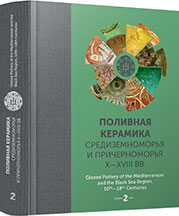
Keywords: Byzantine White Ware; 10th century; dishes with hollow stem; lid; inscribed and impressed sub-glazing decoration; old-Bulgarian monastery; import
In the article we publish the collection of 11 complete and two partially restored dishes and one lid, found during the excavations in the old Bulgarian monastery at the village of Ravna, Provadia region. They were found in fragments in the yard and in a room near the representative building, which could be considered as the residence of the abbot and of the visitors of the monastery. All of dishes are import from Byzantium, dating around the middle of the 10th c. The stratigraphic data allow us to determine the upper limit of their use to be before the burning of the monastery, which most probably happened during the events in Bulgaria during 969—971. Judging by the technique of manufacturing and the decorations, the dishes belong to the so-called Glazed White Ware. They are covered with dark-green or grass-green and light-yellow or yellow-brownish glazing. There is also inscribed or impressed decoration under the glazing.The goal of this publication is to focus the attention of the specialist on Byzantine pottery in the collection, to determine more precisely its dating and a possible place of manufacturing.
More...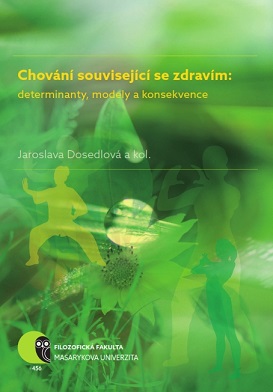
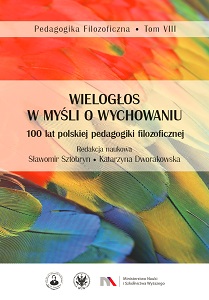
Keywords: metaphysics; ontology; realism; idealism; education; anthropology
In this article I discuss the philosophical history of idealism and ontology as well as of realism and metaphysics (direct inspiration for this text comes from a book by Piotr Jaroszyński: Metaphysics or Ontology? [Polish edition: Lublin 2011; English edition: Brill, 2018]). The dispute that takes place between these trends influences pedagogy and in many cases determines it. The text indicates the consequences resulting from the adoption of educational ontology or educational metaphysics. They also affect anthropology, ethics, axiology and the practice of upbringing and education.
More...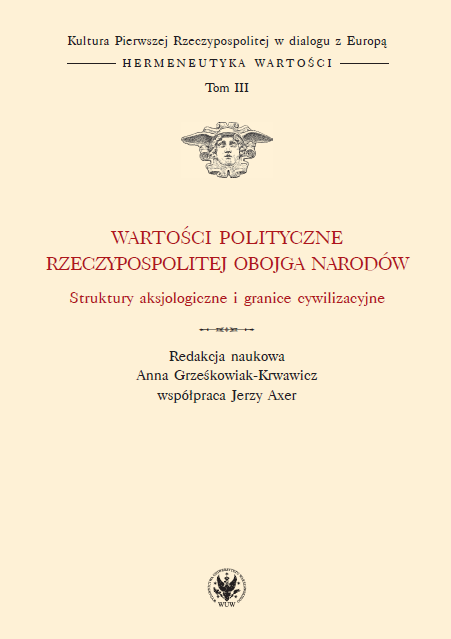
Keywords: public life of the First Republic; political culture; political journalism; state; community of citizens
The authors present the political values functioning in the Polish-Lithuanian Commonwealth – primarily, but not only, in the community of politically active noble citizens. They try to recreate them on the basis of a thorough analysis of various sources – treaties and political journalism, public speeches at the Sejm and regional councils, but also unofficial statements, private exchange of views between participants in political life. The subject of the analysis is, inter alia, the ideal of the state as a community of citizens present in the political discourse, as well as the contemporary vision of a man-citizen, a member of the political community, and his obligations towards it. The authors also present and interpret the then understanding of the concepts of homeland or patriotism, and devote a lot of attention to the fundamental values of the political life of the Polish-Lithuanian Commonwealth, such as law and freedom. They show the analyzed issues not only in a broader European context, but also in different epochs, which allows to follow the evolution in the understanding and evaluation of political concepts and ideals. The 12-volume series of monographs „Kultura Pierwszej Rzeczpospolitej w dialogu z Europą. Hermeneutyka wartości” presents the cultural heritage of the 15th and 18th centuries as an integral but original part of European culture. The research goal is to identify the ways and forms of the mutual transmission of aesthetic, political and religious values and to present in a broad, multilateral comparative context the axiological structure of Polish culture of the past epochs. Cultural texts are examined from an internal perspective as records of acts aimed at understanding values, and from an external perspective as statements that join European literary-aesthetic, political and religious discussions. In an intense dialogue, the culture of the Republic of Poland shows not only a receptivity to new ideas, but also creativity and dynamics of action in Europe.
More...
Keywords: Sarmatian piety; counter-reformation in Poland; post-Tridentine religiosity
Volume VI of the series shows not only the peculiarity of the religious culture of the First Polish Republic, the character and specificity of the "Sarmatian" piety, but also reveals the basic paths of development of this culture in connection with the thought developed in parallel by Catholic thinkers and writers in Western Europe. The research focused on the issues of opening up Polish post-Tridentine culture to the dynamics of the development of religious thought in other European countries, the ability to conduct dialogue with a foreign culture, and the possibility of adaptation, assimilation and transformation of foreign theories or ideas for the needs of indigenously Polish culture. The authors of individual dissertations try to answer the questions, on the one hand, about the scope and degree of involvement of Poles in the process of the renewal of Catholicism in Europe, about their participation in European discussion forums, about the knowledge of the Sarmatians' writings and the impact of these writings in the model of the post-Tridentine renewal of the Church and Catholic religious culture, on the other hand - about the ways of fresh counter-reformation ideas entering the Republic of Poland, the absorption, demand and methods of introducing conciliar decisions into the practice of religious life and the literature of the post-Tridentine times. The 12-volume series of the monograph Kultura First Rzeczpospolitej in dialogue with Europe. The Hermeneutics of Values presents the cultural heritage of the 15th and 18th centuries as an integral but original part of European culture. The research goal is to identify the ways and forms of the mutual transmission of aesthetic, political and religious values and to present in a broad, multilateral comparative context the axiological structure of the Polish culture of old times. Cultural texts are examined from an internal perspective as records of acts aimed at understanding values, and from an external perspective as statements that join European literary-aesthetic, political and religious discussions. In an intense dialogue, the culture of the Republic of Poland shows not only a receptivity to new ideas, but also creativity and dynamics of action in Europe.
More...
Keywords: Sarmatian piety; counter-reformation in Poland; post-Tridentine religiosity
Volume VI of the series shows not only the peculiarity of the religious culture of the First Republic, the character and specificity of the "Sarmatian" piety, but also reveals the main paths of development of this culture in connection with the thought developed in parallel by Catholic thinkers and writers in Western Europe. The research focused on the issues of opening up Polish post-Tridentine culture to the dynamics of the development of religious thought in other European countries, the ability to conduct dialogue with a foreign culture, and the possibility of adaptation, assimilation and transformation of foreign theories or ideas for the needs of indigenously Polish culture. The authors of individual dissertations try to answer the questions, on the one hand, about the scope and degree of involvement of Poles in the process of renewal of Catholicism in Europe, about their participation in European discussion forums, about the knowledge of Sarmatian writings and the impact of these writings in countries where it was particularly clearly shaped the model of the post-Tridentine renewal of the Church and Catholic religious culture, on the other hand - about the ways of fresh counter-reformation ideas entering the Republic of Poland, the absorption, demand and methods of introducing conciliar decisions into the practice of religious life and the writings of the post-Tridentine times. The 12-volume series of the monograph "Kultura Pierwszej Rzeczypospolitej w dialogu z Europą. Hermeneutyka wartości" presents the cultural heritage of the 15th and 18th centuries as an integral but original part of European culture. The research goal is to identify the ways and forms of the mutual transmission of aesthetic, political and religious values and to present in a broad, multilateral comparative context the axiological structure of the Polish culture of old times. Cultural texts are examined from an internal perspective as records of acts aimed at understanding values, and from an external perspective as statements that join European literary-aesthetic, political and religious discussions. In an intense dialogue, the culture of the Republic of Poland shows not only a receptivity to new ideas, but also creativity and dynamics of action in Europe.
More...
Keywords: Sarmatian piety; counter-reformation in Poland; post-Tridentine religiosity
Volume VI of the series shows not only the peculiarity of the religious culture of the First Republic, the character and specificity of the "Sarmatian" piety, but also reveals the main paths of development of this culture in connection with the thought developed in parallel by Catholic thinkers and writers in Western Europe. The research focused on the issues of opening up Polish post-Tridentine culture to the dynamics of the development of religious thought in other European countries, the ability to conduct dialogue with a foreign culture, and the possibility of adaptation, assimilation and transformation of foreign theories or ideas for the needs of indigenously Polish culture. The authors of individual dissertations try to answer the questions, on the one hand, about the scope and degree of involvement of Poles in the process of renewal of Catholicism in Europe, about their participation in European discussion forums, about the knowledge of Sarmatian writings and the impact of these writings in countries where it was particularly clearly shaped the model of the post-Tridentine renewal of the Church and Catholic religious culture, on the other hand - about the ways of fresh counter-reformation ideas entering the Republic of Poland, the absorption, demand and methods of introducing conciliar decisions into the practice of religious life and the writings of the post-Tridentine times. The 12-volume series of the monograph "Kultura Pierwszej Rzeczypospolitej w dialogu z Europą. Hermeneutyka wartości" presents the cultural heritage of the 15th and 18th centuries as an integral but original part of European culture. The research goal is to identify the ways and forms of the mutual transmission of aesthetic, political and religious values and to present in a broad, multilateral comparative context the axiological structure of the Polish culture of old times. Cultural texts are examined from an internal perspective as records of acts aimed at understanding values, and from an external perspective as statements that join European literary-aesthetic, political and religious discussions. In an intense dialogue, the culture of the Republic of Poland shows not only a receptivity to new ideas, but also creativity and dynamics of action in Europe.
More...
Keywords: Sarmatian piety; counter-reformation in Poland; post-Tridentine religiosity
Volume VI of the series shows not only the peculiarity of the religious culture of the First Republic, the character and specificity of the "Sarmatian" piety, but also reveals the main paths of development of this culture in connection with the thought developed in parallel by Catholic thinkers and writers in Western Europe. The research focused on the issues of opening up Polish post-Tridentine culture to the dynamics of the development of religious thought in other European countries, the ability to conduct dialogue with a foreign culture, and the possibility of adaptation, assimilation and transformation of foreign theories or ideas for the needs of indigenously Polish culture. The authors of individual dissertations try to answer the questions, on the one hand, about the scope and degree of involvement of Poles in the process of renewal of Catholicism in Europe, about their participation in European discussion forums, about the knowledge of Sarmatian writings and the impact of these writings in countries where it was particularly clearly shaped the model of the post-Tridentine renewal of the Church and Catholic religious culture, on the other hand - about the ways of fresh counter-reformation ideas entering the Republic of Poland, the absorption, demand and methods of introducing conciliar decisions into the practice of religious life and the writings of the post-Tridentine times. The 12-volume series of the monograph "Kultura Pierwszej Rzeczypospolitej w dialogu z Europą. Hermeneutyka wartości" presents the cultural heritage of the 15th and 18th centuries as an integral but original part of European culture. The research goal is to identify the ways and forms of the mutual transmission of aesthetic, political and religious values and to present in a broad, multilateral comparative context the axiological structure of the Polish culture of old times. Cultural texts are examined from an internal perspective as records of acts aimed at understanding values, and from an external perspective as statements that join European literary-aesthetic, political and religious discussions. In an intense dialogue, the culture of the Republic of Poland shows not only a receptivity to new ideas, but also creativity and dynamics of action in Europe.
More...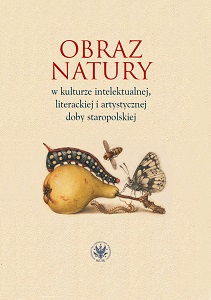
Keywords: modernity; Cartesianism; Socinianism; rationalism; Prometheism; subject; res cogitans; system of thought; superstition; miracle; natura naturans; rational grammar; Bacon; Descartes; Spinoza; Arnauld
The text discusses fundamental and profoundly distinctive changes which occurredin understanding the nature in Polish and European 17th century philosophy. Due tothe specifi c nature of these transformations and intellectual, separatist and culturalintentions of philosophers of that time, the main issue of this work is not nature itself,but the answer to the question how the epochal identity, signifi cance and distinctivenessof modern age can be justifi ed in exploring nature as the object of reasoning. The aimofthe text is to reconstruct the main metaphysical stance of modern age and its modernsystem of thought. The text consists of four parts. The fi rst part discusses twohistoriosophical ideas of the modern era: discontinuity of Mediterranean culture andmodernity as a radically new beginning. The key problem here is the philosophicalcognition and rejecting superstition as a form of thought based on someone else’s authority. The second part discusses several issues: the reconstruction of a modernsystem of thought based on the 17th century idea of subjectivity; the methods employedin rejecting sermocinal thinking and applying the realistic one; a new concept of knowledgeand truth; a new idea of nature – signifi cantly broaden – as the subject of thought.The attempts to justify a miracle as a natural phenomenon are particular cases discussedin the text. The third part explores the modern concept of natural language formulatedwithin rational grammar, which provides grounds for the epochal distinctiveness ofmodernity. The last part presents the modern breakthrough as a source of its owncrisis. Consequently, two basic, albeit concealed, Promethean implications and consequencesof modernity are identifi ed: undeifi cation of rationalised God and alienationof man in his own subjectivity.
More...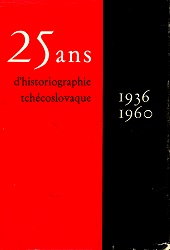
Keywords: Jan Hus;
Czechoslovak historians are paying increasing attention to the pinnacle of our national history, to the Hussite revolutionary movement. Over the past twenty-five years, dozens of works have been written, large or short, which have substantially completed and clarified the picture of this glorious era.
More...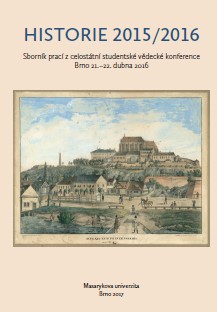
Keywords: Franz Anton von Dietrichstein; Wilhelm von Leslie; travel instructions and travel itinerary;
Der Artikel stellt die Reisenstruktionen und den Reiseitinerar für Franz Anton von Dietrichstein, Wilhelm von Leslie und ihren Hofmeister Joseph Seim nach Rom vor, wo sie in den Jahren 1662–1666 das Theologiestudium auf dem Collegium Romanum absolvierten und zuletzt in den Jesuitenorden eintraten. Über dieser Studienreise berichtet uns die zahlreiche Korrespondenz des Hofmeisters an den Fürst Ferdinand von Dietrichstein, der als Stiefbruder und Vormund Franz Antons auch der Hauptorganisator dieser Reise war. Trotz ihrer geistlichen Orientierung ähnelte sich diese Reise in vielen Richtungen den damaligen Kavalierstouren – unter anderen geht es auch um die Form und den Inhalt der Reiseinstruktionen und des Reiseitinerars. Ferdinand von Dietrichstein war auch der Autor beider Instruktionen. Ihre Struktur und auch ihrer Inhalt erweisen nach der Komparation mit den bisherigen historiographischen Erkentnissen eine beträchtliche Ähnlichkeit mit den Reiseinstruktionen für die Kavalierstouren. Die einzelnen Punkte der Instruktion werden im vorgelegten Artikel auch im Bezug auf den tatsächlichen Vorgang der Reise präsentiert, wie er in der Korrespondenz kennen zu lernen ist. Ähnlich wird auch der Reiseitinerar behandelt, der auch viele beliebten Destinationen der Kavalierstouren beinhaltet. Dieser Itinerar wurde jedoch aus praktischen Gründen nicht konsequent realisiert, wie der Artikel wieder mithilfe der Belege aus der Korrespondenz zeigt.
More...
Keywords: astrology; astronomy; body in the Renaissance; Scientific Revolution; celestial influences
Using the example of early modern English astrological and astronomical texts such as the medical case books of Simon Forman (1552–1611) and Richard Napier (1559–1634) and the treatise Astrostereon by Edward Gresham (1565–1613), as well as dramatic works, this text discusses the relationship between Renaissance astrology and epistemology in the context of celestial influences on the human body. Michel Foucault’s categories of ressemblance and signatures, and the metaphor of a seal in wax, are employed to demonstrate the semiotics of the human body in this period. The primary assumption of the article is the ordering function of the sciences of the sky in the Renaissance, which ensured both social and cognitive order.
More...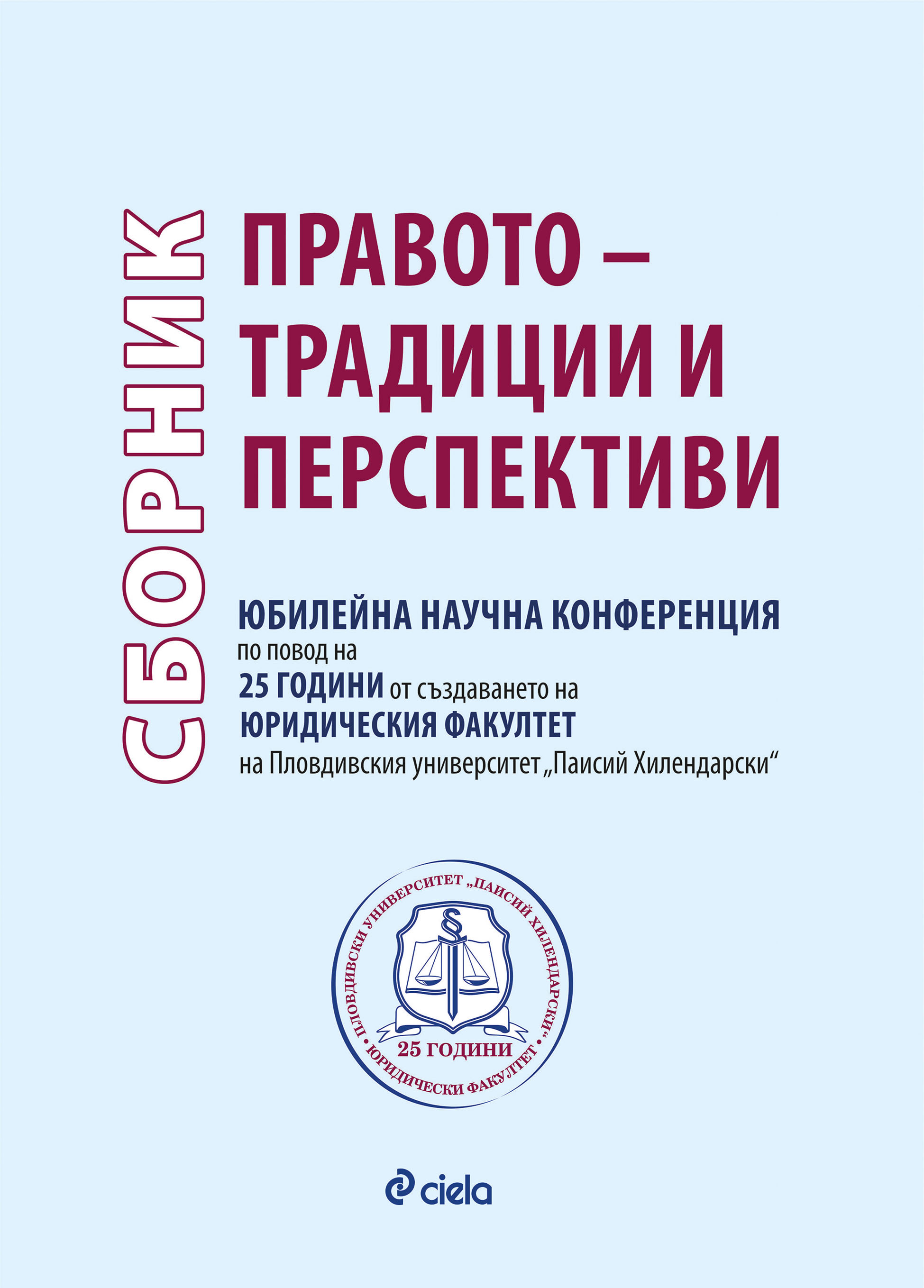
Keywords: legal education; jurisdiction; reforms; institutions; Justinian; modern law
This paper presents the experience of the study and teaching of Roman law and the reform of legal education by Emperor Justinian, which is related to the reform of positive law, the interpretation of jurisprudence and jurisdiction. This topic is discussed in the context of the current reforms of Bulgarian legal education and the judiciary.
More...